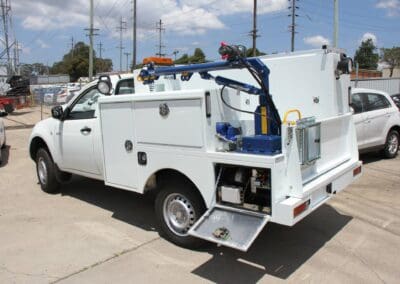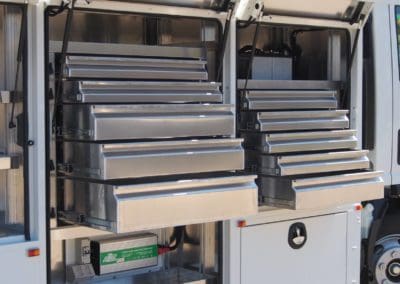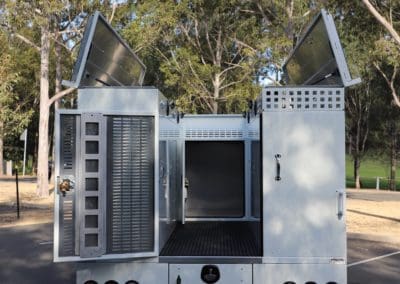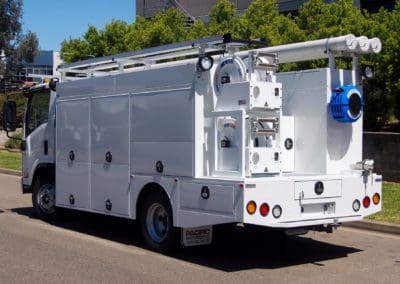What Size Tray Body Do I Need? Match Tray to Cab & Chassis
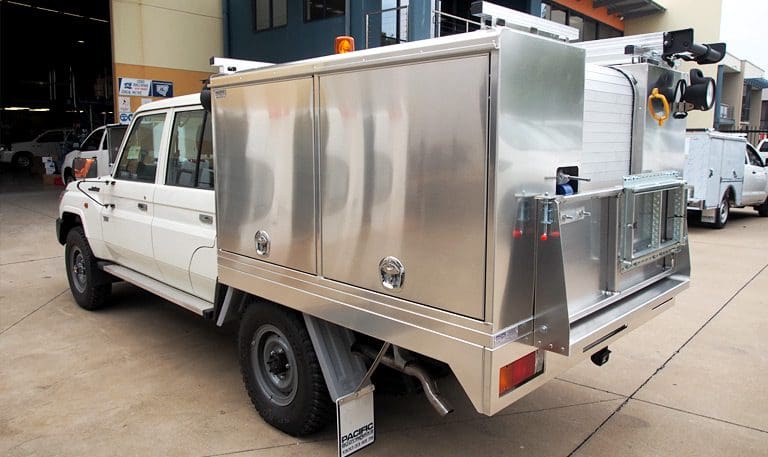
What Are the Best Truck Bodies in Sydney for Trades and Fleet Use?
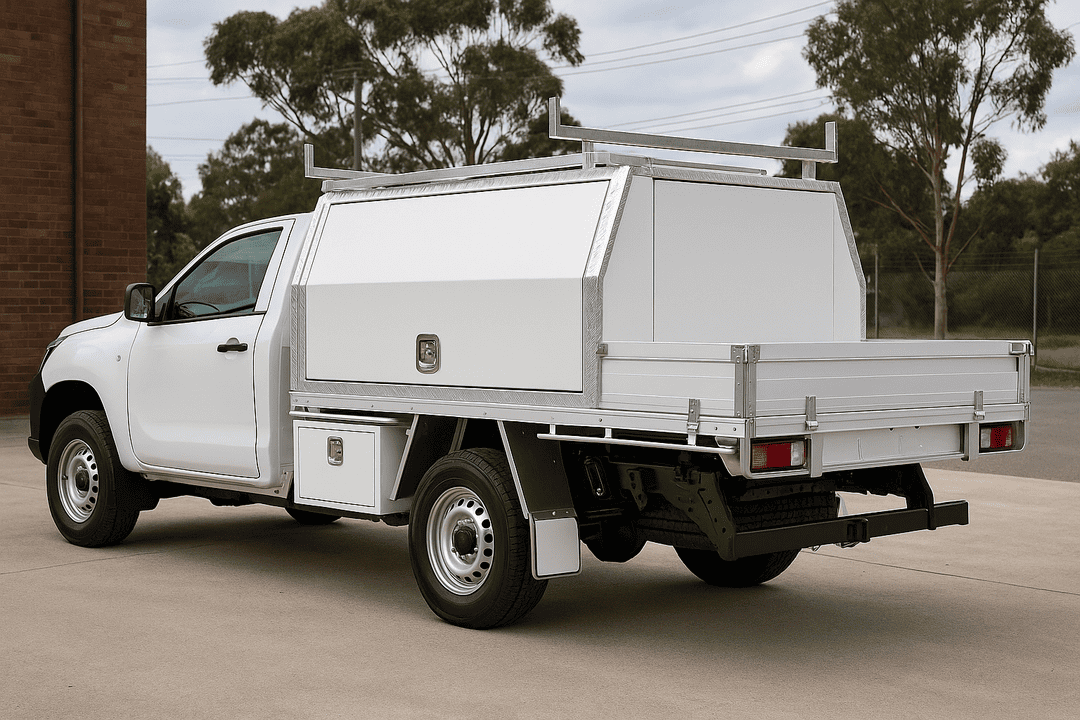
Tray body size depends on your ute’s cab type and chassis. Single cabs can support trays up to 2700mm, while dual cabs are limited to 1800mm or less. Chassis specs, wheelbase, and payload also impact what’s legal and functional. Match tray dimensions to job needs for best performance.
Choosing the right tray body size is all about functionality, compliance, and daily trade performance. Whether you’re operating a single-cab ute, an extra-cab, or a dual-cab setup, the size and fit of your tray directly impact how much you can carry, how safely you can do it, and whether your vehicle stays road legal.
The challenge? Tray sizing depends on key factors like your cab type, chassis length, gross vehicle mass (GVM), and what your trade demands from the setup. A plumber carrying 3-meter PVC pipes doesn’t need the same tray as a service technician working from tight urban streets in a dual-cab.
This guide simplifies that decision by breaking down:
- Tray sizing by cab type (single, extra, dual)
- How chassis specs and wheelbase influence fitment
- Legal limits you must stay within in NSW
- How tray material affects payload and performance
- Best sizes for different trades, from electrical to landscaping
Whether you’re upgrading an existing work ute or speccing a new build, this article will help you avoid guesswork and align your tray size with how your business operates, starting with the platform your entire trade vehicle is built on.
Tray Sizes by Cab Type: Know Your Vehicle’s Real Limits
Your cab type determines how much physical space is available for the tray. It also affects payload balance, vehicle dynamics, and storage access.
Single Cab
Single cab vehicles have the longest tray body compatibility, with sizes typically ranging from 2400mm to 2700mm in length. This makes them ideal for users who need extended flatbed space, for example, carrying ladders, long pipes, or oversized toolkits.
Single cabs also offer more even weight distribution over the rear axle, which improves payload stability. Trades like landscaping, construction, and general delivery often choose single cab utes to maximise usable tray volume.
If you’re fitting out a single cab vehicle, view Pacific Bodyworks’ full range of tray bodies for all configurations, available in durable aluminium for enhanced longevity and fuel efficiency.
Extra Cab (Space Cab)
An extra cab gives you additional internal cabin storage, without losing too much tray real estate. Standard tray sizes for extra cabs range from 2100mm to 2250mm.
This configuration suits technicians or trades who occasionally carry crew or secure gear inside the cab. It offers a good trade-off between tray volume and in-cab space.
Dual Cab
Dual cabs have the shortest tray compatibility, with most trays measuring 1650mm to 1800mm. This setup prioritises seating over storage, which means the tray must be planned more carefully to ensure functional use.
If you’re running a dual cab for trade use, combining the tray with a canopy body may provide better organisation, security, and weather resistance. Canopies help compensate for limited flat tray space by offering vertical storage and racking systems.
Chassis and Wheelbase: The Foundation of Tray Fitment
The chassis beneath your cab plays a critical role in what tray body sizes are viable. Matching a tray to your chassis involves checking:
- Wheelbase length
- Rear overhang allowances
- Mounting rail positions
- Gross Vehicle Mass (GVM) limits
For example, a long wheelbase single cab can safely support a tray over 2700mm, whereas a short wheelbase dual cab may be legally restricted to a tray under 1800mm.
This is where professional fabrication becomes essential. The team at Pacific Bodyworks designs trays to align precisely with the chassis mounting points, avoiding issues like overhang violations or axle misbalance. For larger-scale needs, such as trade fleets or utility trucks, explore their heavy-duty truck body options that accommodate longer chassis with reinforced substructures.
Material Matters: How Tray Weight Affects Size and Performance
When selecting a tray, it’s not just the size that matters, material choice directly influences how much payload your vehicle can legally carry.
Aluminium tray bodies are up to 30% lighter than their steel counterparts, which allows for more gear on board without exceeding GVM limits. A lighter tray also improves fuel efficiency and reduces wear on suspension components.
Pacific Bodyworks specialises in aluminium fabrication, ensuring strength without excess weight. For trades like plumbing or electrical, where every kilogram counts, aluminium trays deliver the optimal balance between durability and payload efficiency.
Legal Tray Dimensions: What’s Allowed in NSW?
In Australia, tray bodies must comply with ADR (Australian Design Rules) and state-based registration regulations. Exceeding size limits can lead to fines, defect notices, or failed inspections.
Key sizing rules to follow:
- Tray width cannot exceed the vehicle’s body width
- Rear overhang is limited to 60% of the wheelbase
- Number plates and taillights must remain visible and unobstructed
- Mudguards and reflectors must be correctly fitted
Fitting a tray that’s too large, or poorly mounted, can make your vehicle non-compliant. That’s why it’s important to partner with experienced builders like Pacific Bodyworks, who deliver tray systems fully aligned with legal standards.
Best Tray Sizes for Common Trades (and Why It Matters)
Different industries require different tray dimensions and setups. Here’s how size relates to real-world functionality:
Plumbers & Landscapers
Plumbers often require longer trays to accommodate full-length pipe racks and material carriers. Landscapers need open tray access with side steps or removable gates for loading mowers, soil, or tools.
Electricians & Service Techs
Smaller trays with modular compartments work better here, especially in dual cab setups. Pairing the tray with secure underbody toolboxes or a compact service body is often the more practical route.
Pacific Bodyworks offers trade-specific tray and service body options, designed for the exact requirements of field technicians, fleet managers, and owner-operators alike.
Pacific Bodyworks Tray Body Solutions for Every Cab & Chassis
Every tray built by Pacific Bodyworks is custom matched to your cab type and chassis layout. Whether you operate a Hilux, Ranger, D-Max or Isuzu light truck, there’s a build option to suit:
- Tailored for single, extra, and dual cab utes
- Available in raw aluminium or painted corporate colours
- Mounts engineered for perfect alignment with vehicle chassis
- Load-tested for safety and compliance
Their tray solutions can also be integrated with ladder racks, underbody drawers, LED lighting, and lockable compartments to suit your daily work needs.
To see what these builds look like in action, explore their truck body gallery and compare fitouts by vehicle class and tray type.
Final Checks Before You Choose a Tray Size
Before committing to a tray setup, confirm the following:
- Vehicle cab type: single, extra, or dual cab
- Chassis spec: wheelbase, GVM rating, rail spacing
- Intended use: what you carry daily and how it’s loaded
- Weight balance: ensure tray weight allows for legal payload
- Fitment compliance: no overhangs or visibility issues
If you’re unsure, speak with the team at Pacific Bodyworks, designers of some of the most versatile tray bodies in Australia. They’ll help you map the right configuration from start to finish.
Ready to Fit the Right Tray? Speak With Pacific Bodyworks
Choosing a tray that fits both your vehicle and your trade is critical to safety, performance, and ROI. Pacific Bodyworks has over 35 years of experience building custom aluminium tray bodies that align perfectly with cab and chassis designs.
View all available tray body solutions, or get in touch today to discuss your sizing needs and configuration preferences.

